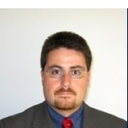Български
Albanian
Arabic
Armenian
Azerbaijani
Belarusian
Bengali
Bosnian
Catalan
Czech
Danish
Deutsch
Dutch
English
Estonian
Finnish
Français
Greek
Haitian Creole
Hebrew
Hindi
Hungarian
Icelandic
Indonesian
Irish
Italian
Japanese
Korean
Latvian
Lithuanian
Macedonian
Mongolian
Norwegian
Persian
Polish
Portuguese
Romanian
Russian
Serbian
Slovak
Slovenian
Spanish
Swahili
Swedish
Turkish
Ukrainian
Vietnamese
Български
中文(简体)
中文(繁體)
Turkish Neurosurgery 2019
Само регистрирани потребители могат да превеждат статии
Вход / Регистрация
Линкът е запазен в клипборда
Най-пълната база данни за лечебни билки, подкрепена от науката
- Работи на 55 езика
- Билкови лекове, подкрепени от науката
- Разпознаване на билки по изображение
- Интерактивна GPS карта - маркирайте билките на място (очаквайте скоро)
- Прочетете научни публикации, свързани с вашето търсене
- Търсете лечебни билки по техните ефекти
- Организирайте вашите интереси и бъдете в крак с научните статии, клиничните изследвания и патентите
Въведете симптом или болест и прочетете за билките, които биха могли да помогнат, напишете билка и вижте болестите и симптомите, срещу които се използва.
* Цялата информация се базира на публикувани научни изследвания



